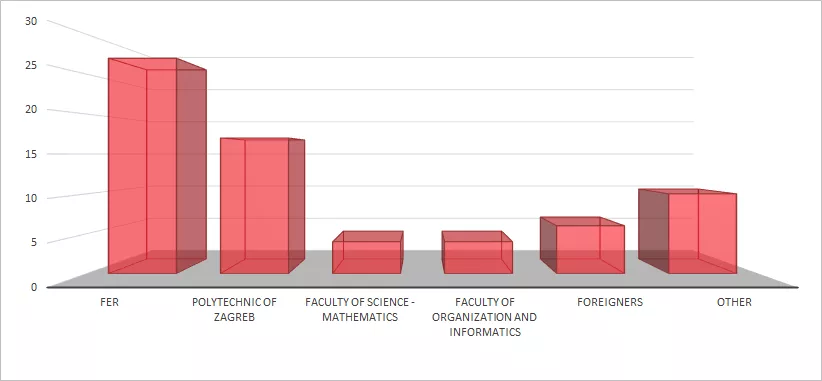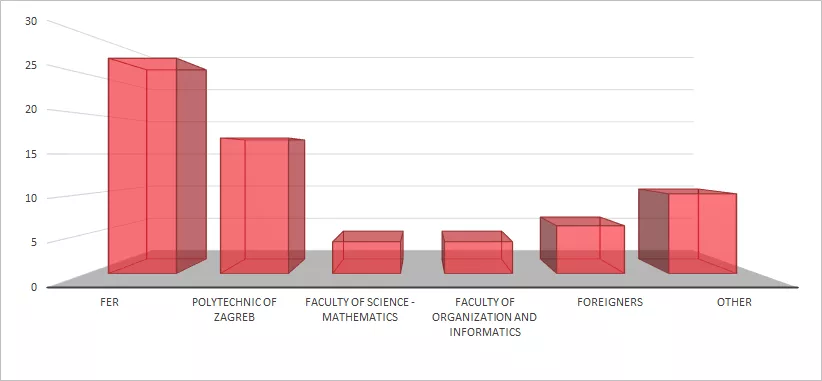We’ve recently finished a hiring campaign with the goal of bolstering the ranks of our Mobile, Web and JavaScript teams. After analyzing the data from the hiring process, we’ve noticed a couple of interesting trends we’d like to share with everyone.
I haven’t been working here for long, but from what I have found out about these guys I can say that no one here really cares much about traditional sales and marketing. That could have something to do with the humble beginnings and very fast growth, but the main reason is something else.
We’ve decided to focus our energy on choosing the right employees, investing in them, training them and, in general, giving them a stable platform and surrounding to become the best at what they do.
All of this has had a large impact on what people think about Infinum in the job market today. It is indeed a great honor to be a desirable employer in the Croatian market.
Cut to the chase – give us some numbers!
We had three official job openings running for 1 month. I say official because we accept open applications daily, and personally, as a human resources specialist, I always look forward to receiving them.
Our goal was to employ 1-2 developers for each of our core software development teams: Webapps team, Websites team, iOS team, Android team and JavaScript team
We don’t typically advertise on job boards . We publish our job listings on:
When it comes to external sources, we typically advertise on:
Overall, we received 68 applications.
Quality over quantity – in every way
The most important thing is not the overall number of received applications, but the fact that all of them were what we were looking for; we didn’t receive any parachute job applications, i.e. from people who have no experience in software development.
As you can imagine, this is very important, since we didn’t have to waste any time on processing job applications and candidates who don’t fit the bill.
Read the job listing
On the other hand, the majority of applicants didn’t send us what was required. This was basically:
- a CV
- a source code sample
Usually, the sole ”not sending what was required” reason would exclude them from the selection process, but seeing that so many people didn’t stick with this “rule” forced me to ask them directly for additional info.
Yes, there was no extra field reserved for uploading files, but some candidates managed it pretty well by uploading their files to Dropbox, Google Drive, or their personal web pages, even creating a Github profile for this occasion, which is what we were actually going for.
Education, gender and demography
The great majority of people who applied were students of FER, but the Polytechnic of Zagreb students were right behind them.

The biggest difference between the two groups is the fact that the Polytechnic of Zagreb students learn a lot on their own, in their free time, and therefore produce more mobile applications available mostly on Google Play. FER (Faculty of Electrical Engineering and Computing) students mostly come with better theoretical knowledge.

Continuing in the same fashion as over the past few years:
- 4 applications from the ladies
- all of the other applicants, 64 of them, were men
The most popular position by far was Mobile Developer.
- 76% of the applicants showed interest in (and had experience in) Android
- 18% didn’t have any experience and didn’t know which platform they would prefer
- only 6% stated interest in (or had experience in working with) the iOS platform.

The reason for that is simple – programming for iOS requires much heavier investment (you have to buy a Mac computer) which creates a big barrier for young developers, especially here in Croatia.
An interesting fact is that we received 6 applications from around the world – United Kingdom, India, Pakistan, Turkey, Serbia and the US.
Conclusion
In general, we’re pleased with the response to our latest recruitment campaign. In a perfect world, there would be more applicants with greater work experience, more iOS developers and maybe even more female developers, but that’s how it goes – you can’t win ’em all.
It’s important to say that, through the years, we have adapted very well to the the specific segments of the labor market we are interested in. We’ve realized that the majority of the people who apply for our job positions are fresh out of college or are still studying. Therefore, we focus more intensely on internal education and knowledge exchange programs (like Android or iOS talks to train young developers to become capable professionals.







